In what ways does your media product use, develop or challenge forms and conventions of real media products?
I partook in a shot by shot analysis of the psychological thriller film trailer ‘Would You Rather’. The new genre of a film trailer meant that I had to develop my basic analysis of mise-en-scene that I had learned from AS and explore other elements such as sound, camera angles and transitions that all adhered to the overall codes and conventions of thriller film trailers. I noticed that there was a shift in lighting used from high key naturalistic lighting to low key artificial lighting to reflect the shift in mood and growing tensions as the trailer developed. For example in a mid shot, protagonist Iris was shown shutting a door on the natural lighting from the window behind. Roland Barthes argues that audiences “look for signs to help them interpret the narrative” which is evident here as the producers of the trailer encoded the change in atmosphere through the change infighting which was then decoded by the audience who could infer that something sinister was about to happen. Through my detailed shot by shot analysis I was able to analyse a range of specific codes and conventions similar to this. I developed on my basic mise en scene research and adapted it to the film trailers I analysed. I effectively took inspiration from this research as I created a shift between Bea’s happy life before and how isolated she feels in the present. I did this by exploiting the naturalistic high key lighting outdoors at golden hour and juxtaposing it by shooting at night with Bea’s face being lit only by an artificial torch light creating a sinister and isolated feel to the trailer.
Would You Rather
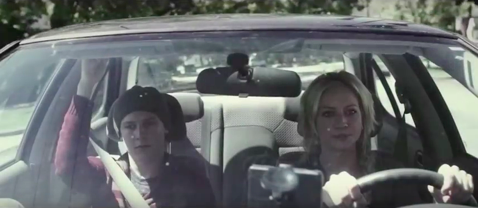
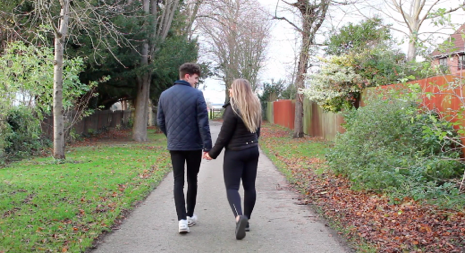
- scenic background (tress and quiet roads)
- naturalistic lighting
- high key lighting
- close proxemics between characters
- scenic background (tress and quiet roads)
- naturalistic lighting
- high key lighting
- close proxemics between characters


This also links to Todorov's theory of equilibrium. Here in the mid shot of iris and her brother, there is high key naturalistic lighting used to create a sense of realism and create a setting which is relatable for the audience to further reinforce the equilibrium created. This would be because it is conventional for psychological thriller films to have a plot surrounding ordinary people who have to face a dilemma that can end tragically. In this case Iris attends a dinner party where she must be that last one standing to save her brother from his illness only to discover when she return back home he has committed suicide.
You can see the similarities between the two shots. Although mine is a long shot, it still follows the same mise-en-scene conventions. There is a clear relationship between the two characters as they are pictured holding hands looking and smiling at one another. In addition the high key naturalistic lighting in the outdoor, tranquil location further suggests a peaceful and happy atmosphere similar to that in the mid shot of the Would You Rather trailer.
The disruption in Would You Rather is signalled by a door slam as Iris closes the door on her brother who is sleeping in the other room. By doing so she shuts out the only entrance of naturalistic lighting leaving a dark and sinister looking corridor in sight. This shot could be symbolic of how Iris is leaving her life behind and everyone she cares for in order to win a better life and save her brother but by doing so she is actually shutting out the only hope and light in her world. I was inspired by the structure of the Would You Rather trailer as I found that its structure and enigma codes were able to effectively push the narrative forward. I decided to signal the start of the disruption stage in a similar way. This was done through a shallow focus close up shot of a carrot being chopped by a knife which is quickly followed by a blackout. The fast cut here helps to create a juxtaposition from the longer shots before creating a sudden tense atmosphere which is then heightened by a dark slam sound effect further suggesting a shift in mood. The rest of our trailer stays in the stage of disruption as without any resolution it leaves the trailer mysterious and open to the interpretation of the audience as to what is to happen next which heightens their intrigue.
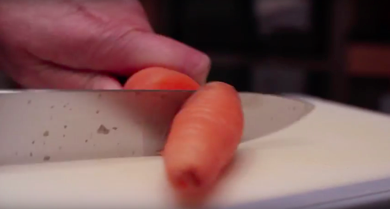
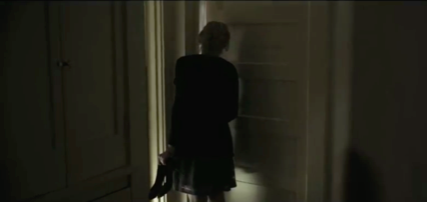
Real Media Text
(Disruption)
My Media Text
(Disruption)
Play Videos
In what ways does your media product use, develop or challenge forms and conventions of real media products?
Genre Conventions
Genre is a way of categorising media texts with theorist John Fiske arguing the the commercial success of a film or text is underpinned by how well it conforms to genre conventions. Thus it was important that our trailer did conform to these conventions.
Steve Neale says that genre is “repetition with underlying pattern of variation” suggesting that repetition is important within a genre as it allows for audiences to identify texts quickly and categorise them so they know what to expect from the media text. Thus conventional features are often included and repeated throughout the genre. In our case this was the inclusion of the conventional theme of reality vs illusion as psychological thrillers conventionally explore the conflicting state of mind of the protagonist. This became apparent after watching the real media trailer for the psychological thriller film ‘Shut In’. I made note of the use of dialogue to help establish the conventional themes of the genre as protagonist Mary is told by her psychiatrist Dr Wilson that her “sleep problems are making it hard for [her] to distinguish [her] nightmares from reality.
This clearly establishes the female protagonist as vulnerable and mentally unstable as well as reinforcing the blurred line between reality and illusion which are all conventional features of the genre. This theme was one I spotted in other psychological thriller films I had analysed and watched such as Inception, Split and Shutter Island. As a way of showing ‘repetition’ of conventions, we also had a female protagonist named Bea is shown to be in need of help as her deteriorating mental stability is highlighted by the use of voiceover as the psychiatrist is heard saying, “Bea’s condition is getting worse and worse” a denotation that Bea is becoming weaker.
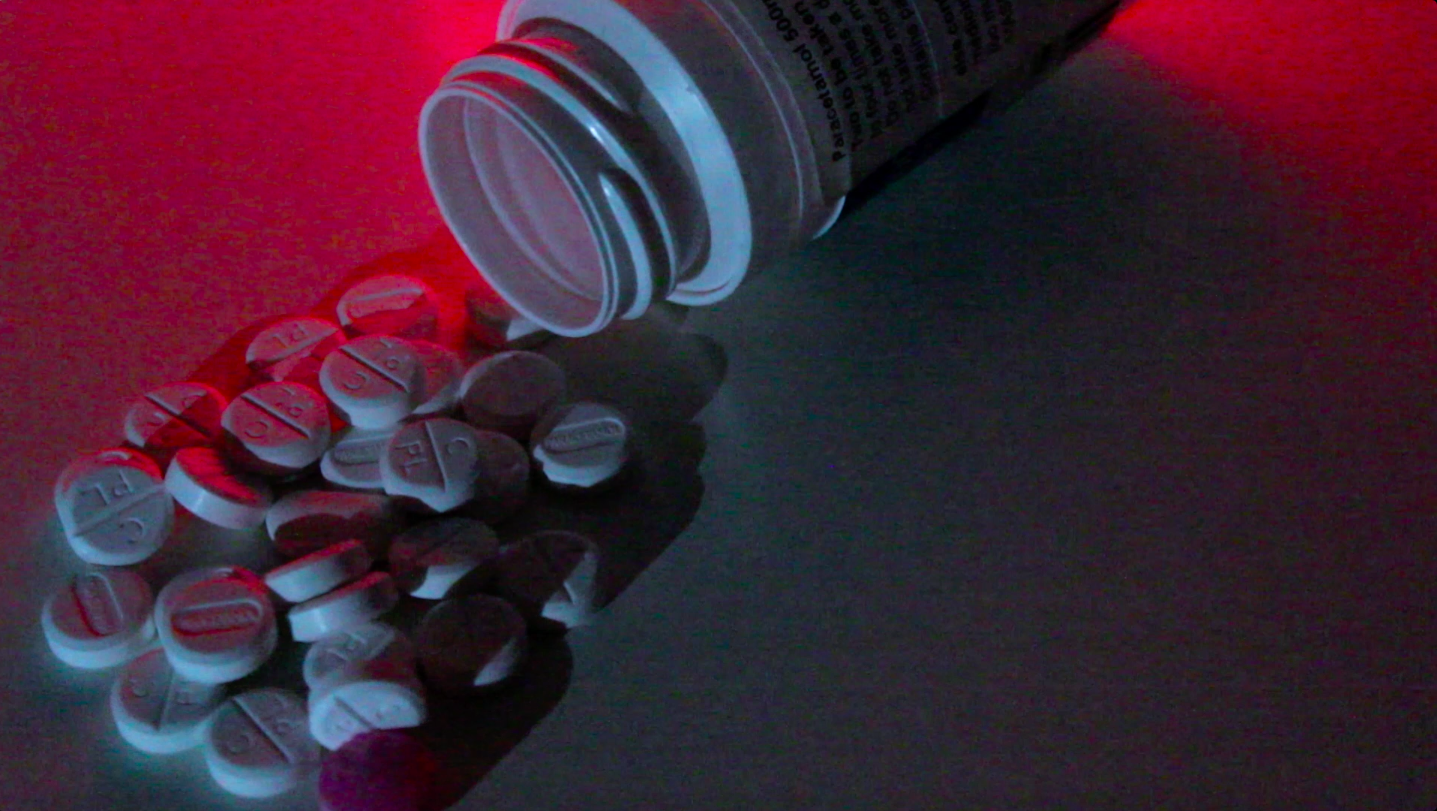
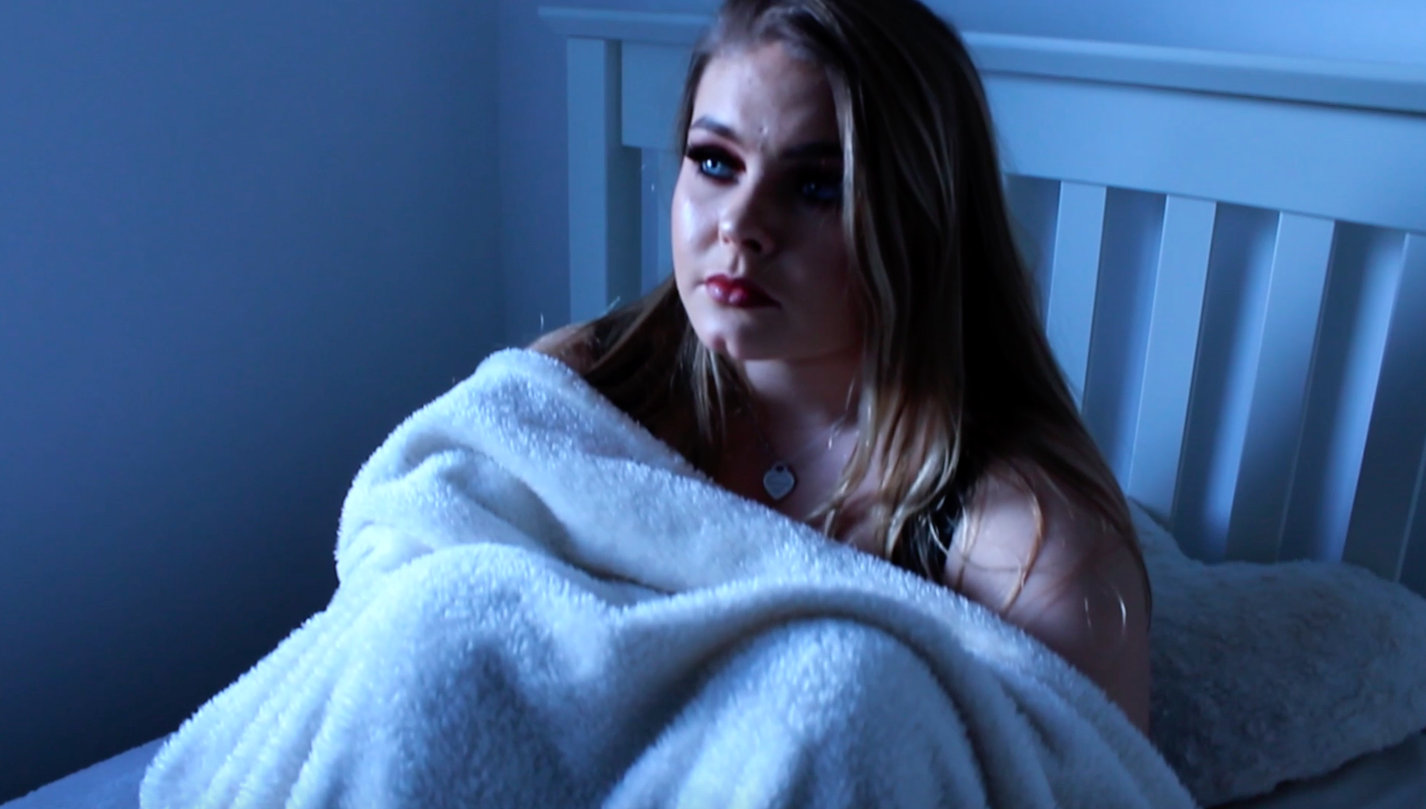
Furthermore, like Mary in Shut In, Bea is unable to separate what is real from her skewed sense of reality. We did this through editing methods that helped to suggest Bea has become reliant on medication and also her fear of Justin. There is a close up shot of a spilled pot of pills that cuts to a titled shot of Bea with wide eyes and a slightly frowned out to express the anxiety and reluctance to accept help for her mental illness - schizophrenia. Theorist Roland Barthes argued that “audiences look for signs to help them interpret meaning” which we did through the iconography as pills often connote illness and mental instability throughout the sub-genre of psychological thrillers showing how our use of repetition in the genre was important to help to audience interpret the meaning of our text.
However, the ‘pattern of variation’ described by Neale also links to our psychological thriller trailer as we were able to also subvert from some of the conventional features, pushing the boundaries of the genre and also creating a film unique from others on the market to sustain audience appeal. We did through our representation of the male character Justin at the beginning of our trailer. Through the use of high key, naturalistic lighting and outdoor locations such as a tranquil, nature abundant pathway a peaceful and warm atmosphere was created surrounding Justin. This was enforced further by the shot reverse shot between Bea that cuts to Justin smiling whilst the words “love and support” are heard in the voiceover on top. All of these micro-elements help to construct Justin’s identity and suggest the he is a kind and loving boyfriend to Justin. This is not usually how a male antagonist in a thriller film is presented and even though this representation changes later on in the trailer, it initially intrigues the audience as the stereotypical gender conventions (males being aggressive and dominant) that are often conformed to in thrillers have been subverted. From a representational perspective, this portrayal of Justin links to theorist Judith Butler’s Queer Theory who sees gender as a social construct and thinks that the blurring of binary stereotypes should be celebrated. By challenging the stereotypical masculine characteristics within Justin as men tend to be shown as dominant and violent more so than equal and caring, it shows a different side to him.
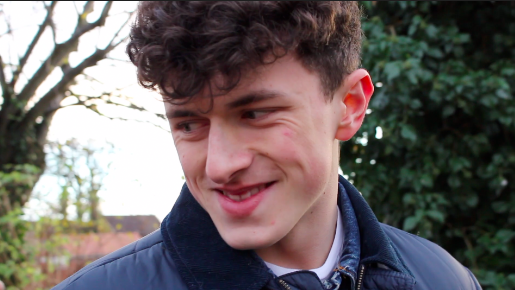
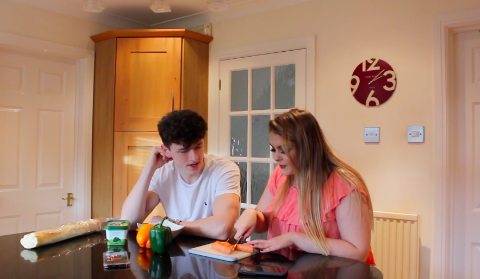
David Buckingham argues that genre is in a constant process of negation and change thus genre conventions are no longer applicable to just one genre as the features are spreading and evolving into a hybrid of genres. This was shown in our trailer through the iconography and mise-en-scene. A running motif and prop throughout the trailer was the prop kitchen knife which applied to Roland Barthes theory of codes, is a semantic code for the audience and connotes danger and death hinting at what is to be expected in the film again linking to the thriller genre. We also included the use of fake blood such as in the extreme shallow focus close up of the knife being tilted in slow motion with the blood dripping down to further enhance the theme of death and violence to the audience. Having said this, blood and gore has been associated more so with horror genre rather than the sub-genre psychological thrillers but as Buckingham has suggested, in modern media the genre conventions have begun to overlap and the features typically associated with other genres of films are being seen elsewhere. By doing so, we are branching out into different and new areas of the thriller genre which ensures of film is exciting and original rather than being a carbon copy of previous films in the same genre. This also links to theorist Jane Feuer who argues that genre is becoming more abstract and harder to identify with showing how the overlapping of conventions present in our trailer is a decision that is also being made by other directors and producers in the media industry.
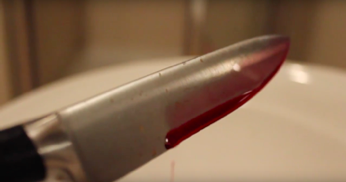
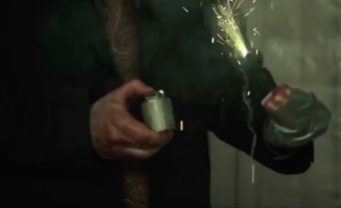
The use of blood and gore in my trailer and in other psychological thrillers and horrors
In what ways does your media product use, develop or challenge forms and conventions of real media products?
Representation Conventions
Theodor Adorno suggests the mass media push down one dominant ideology onto audiences which impacts how they view certain groups of people and their representation. Consequently there are stereotypical representations of men and women which we have both conformed to and challenged within our media trailer. David Buckingham sees identity as “fluid and changeable” which we have done to some extent with the representations of our characters however in general we have positioned the characters as subject to stereotypes.
Levi Strauss’ Binary Oppositional theory is shown in our trailer and in the film poster to represent Bea as good and Justin as evil. Justin is represented as the killer through a close up shot, low key artificial lighting making him look menacing and sinister which creates a contrast to the high angle shot of Bea in bath close up facial expressions etc represents her as weak and good in need of help despite the fact she’s actually a killer and a cheater. We decided not to reveal this representation within the trailer as it would give too much away for the audience (inspired by the representation of Amy Dunne in the Gone Girl trailer) throughout the trailer the enigmatic character Amy is represented to be the victim who was killed by her husband in the trailer through the use of extreme close ups and close ups of her face focusing on her eyes that show a sense of vulnerability however this representation contrasts to how Amy is portrayed by the end of the film as she is actually alive but has framed her husband for her death. Our representations conform to stereotypes that makes the audience sympathise with Bea and hope she can escape Justin from the trailer.
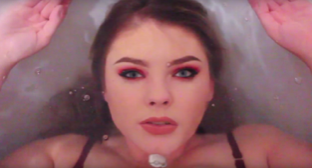
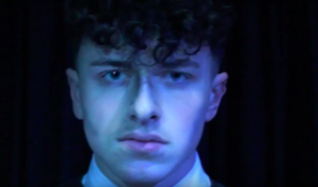
Contrasting use of lighting (light vs Dark = innocence vs aggressor)
From this snippet of the Gone Girl trailer, it is clear that Amy is represented as the innocent victim and is juxtaposed by the husband who we are lead to believe is the killer. This was done well through the use of voice overs from Amy's perspective giving us an insight into her own thoughts. Our trailer creates a similar effect but through the contrasting lighting.
Angela McRobbie suggests female characters tend to utilise their sexuality which I had noted from researching other thriller films like Pulp Fiction where the protagonist Mia is promiscuous and sexual when she needs to be using her sexuality to her advantage. Mia however is a strong female character whereas Bea in our trailer is represented as weak and dependent and so we decided to focus on her vulnerability rather than her sexuality. One could argue that the ariel shot of Bea does the opposite of this as she is wearing little clothing and is plunged underwater showing she is exposed. However she is not exploiting her sexuality instead her exposure here helps to strengthen how vulnerable she is as she has nowhere to hide.

In this shot, Bea is covering herself with a blanket and curled up in bed. Almost childlike to reflect her vulnerability rather than sexuality.
In what ways does your media product use, develop or challenge forms and conventions of real media products?
Location Conventions
It is conventional for psychological thriller films to be set in ordinary places as it creates a sense of reality for the audience and makes them feel as though the situation the characters are in could even happen to them ensuring that they are emotionally invested in the film. For the majority of filming, we shot at Chloe’s house as she lives in a quiet suburban area which was exactly the lifestyle we wanted Bea to have in the film. the house reflects bea’s middle class lifestyle and socio-economic status again to create a juxtaposition with bears life before and bea’s life after her schizophrenia develops. in the long shot below you can see the area in which we did most of our filming. The naturalistic setting also makes the film and trailer more relatable to the audience as it is an environment that they are used to seeing. One location that we used to create a sense of equilibrium in the trailer was the kitchen. The kitchen itself is known to many as the ‘heart of the home’ thus connoting a sense of warmth and love. This is also enforced by the orange tinge created from the light brown coloured wood again adding to the natural and loving feel. All of this creates the equilibrium for the beginning of the film and the trailer.
Examples of Conventional Location Choices



- Suburban Area
- Modern House
- Bedroom
Intertitles
After watching many film posters, I noted how conventionally it has become to include a short animation from the production and/or distribution company for the film. By having a well known company produce and distribute a film such as Universal it means that the film can reach a wider audience and consumers are more likely to trust that he film will be of high quality.
